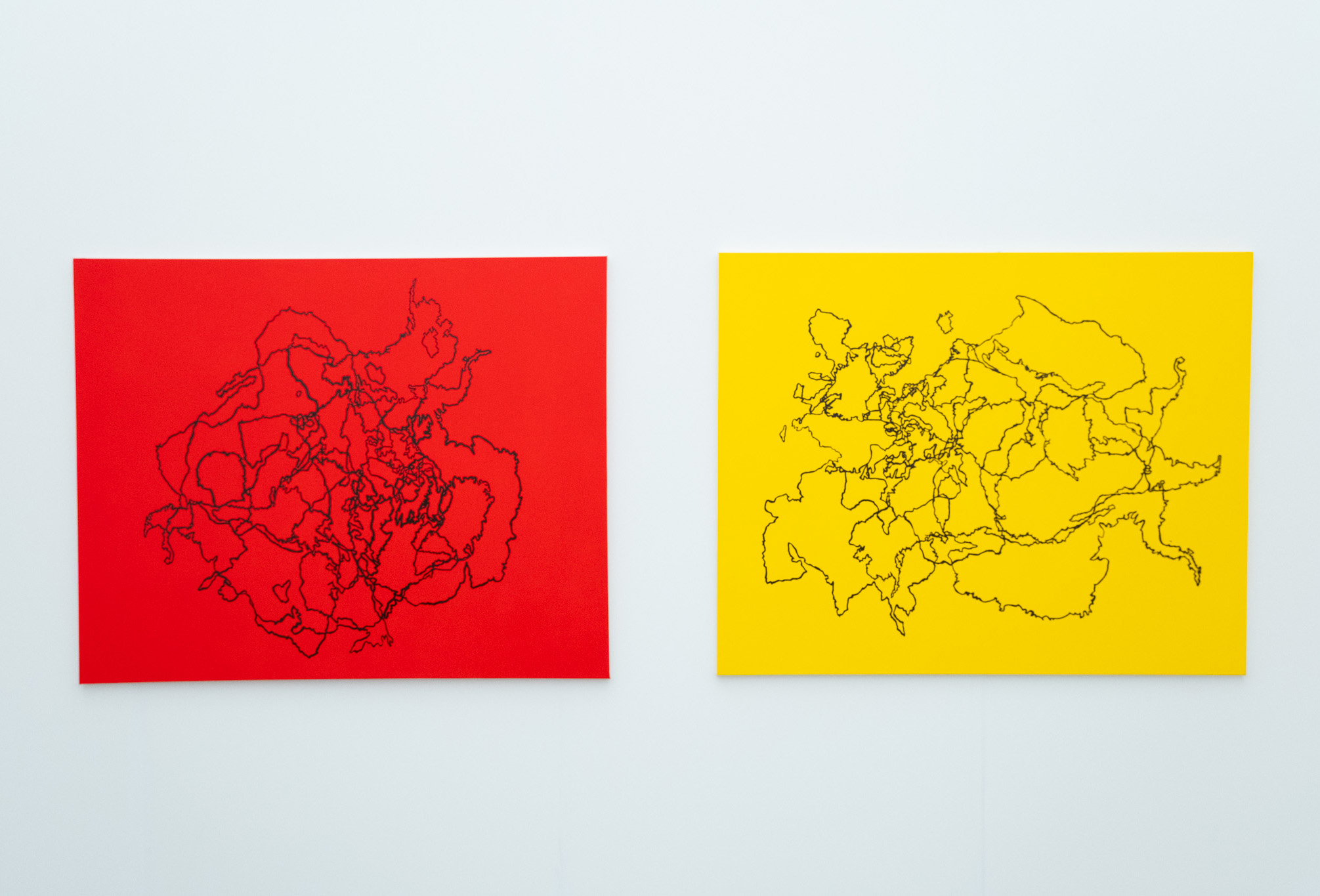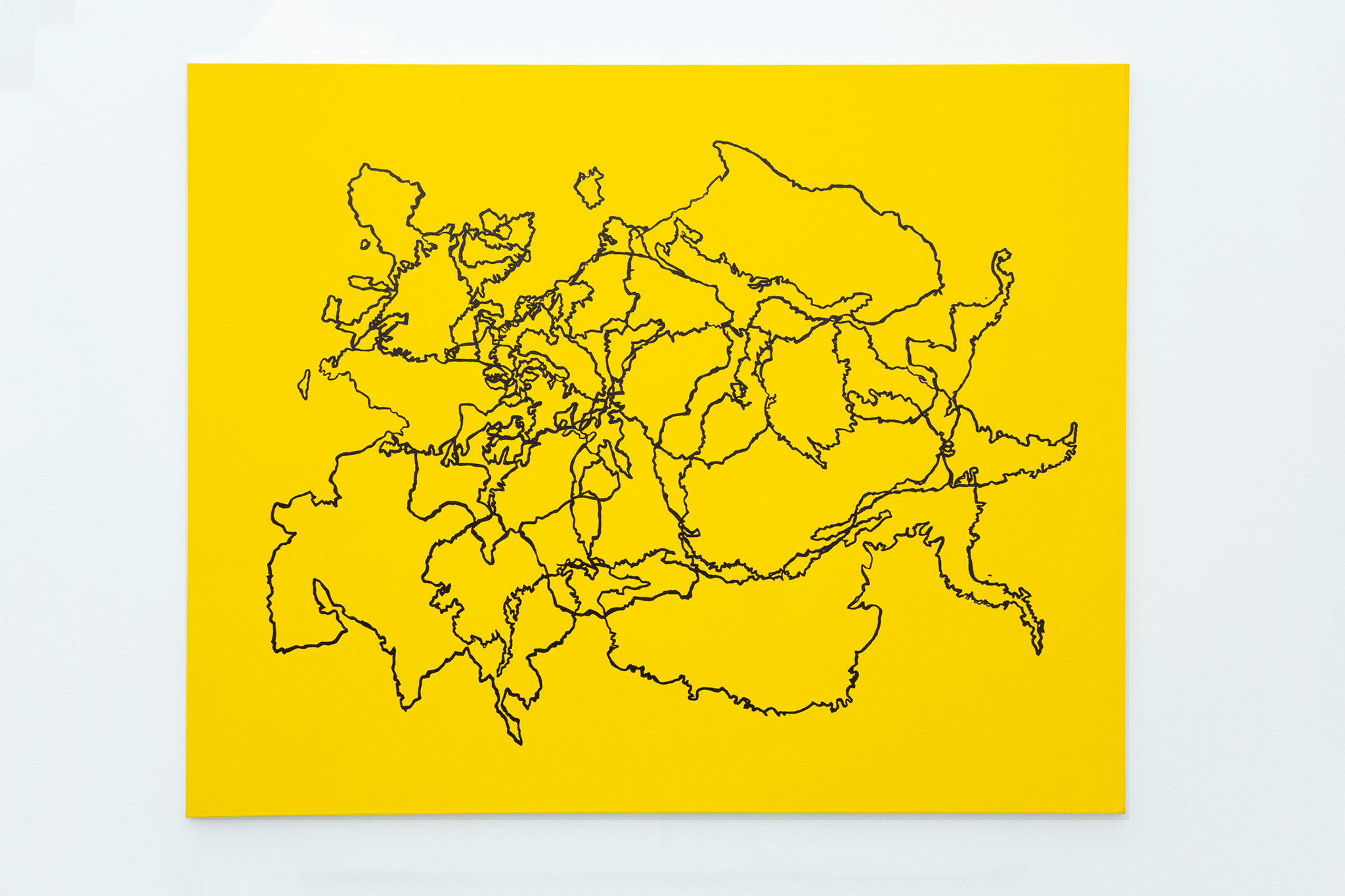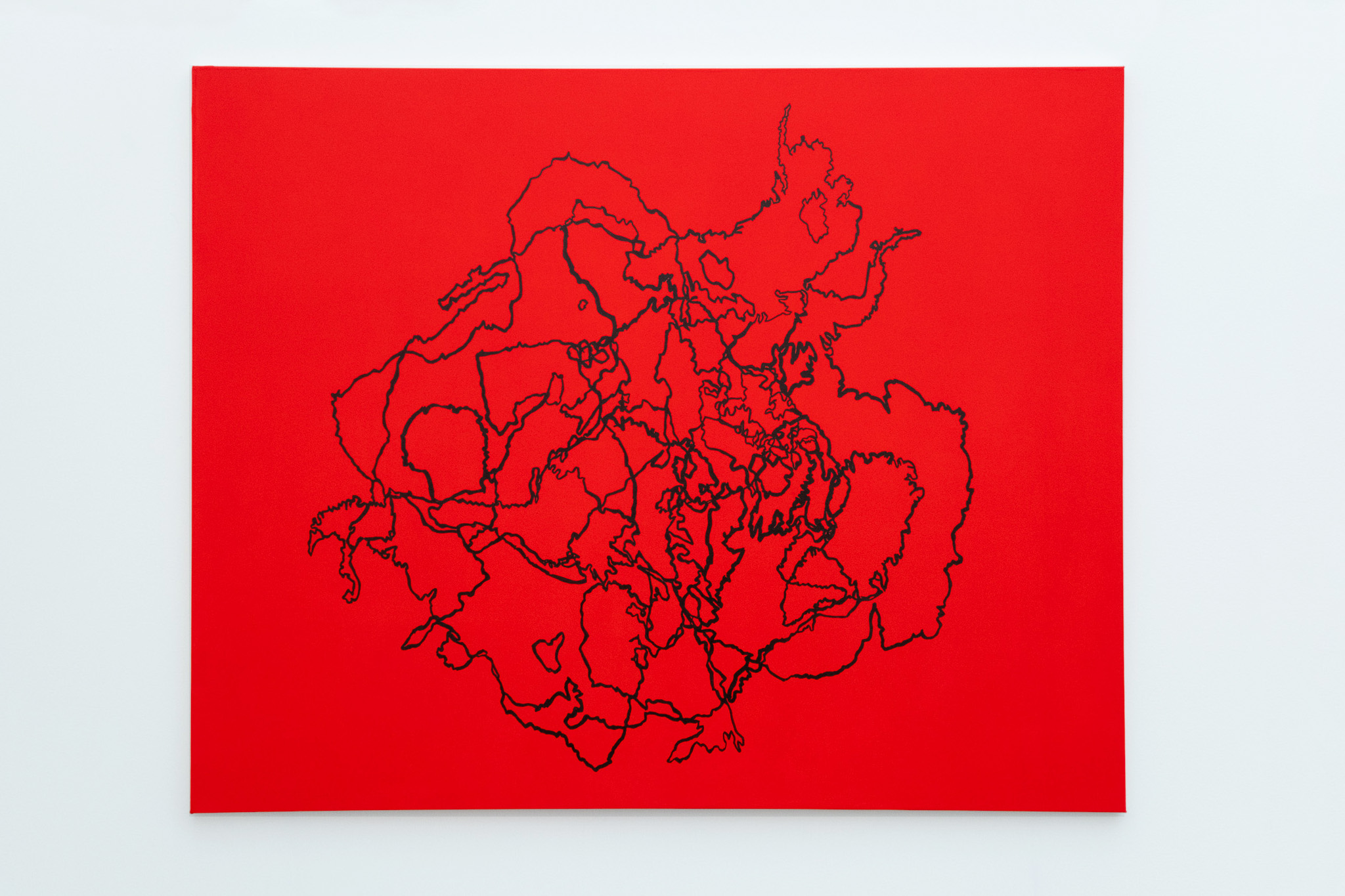Projects/Fairs
Untitled Art | Nest Sector – Booth B18 | Miami Beach
Karlo Andrei Ibarra starts from conceptual experimentation with materials loaded with social significance -such as blackboards, arrest handcuffs and dreamcatchers, ties, taps and maps- to undermine layers of meaning in their politicization. Ibarra's procedure begins with the estrangement of the object, that is, the extraction of the object from its normalized space of use to later, in an exercise of his own conceptualization, produce an effect that detonates the original material and demonstrates the reflexive trigger of each work. Sometimes bringing together two elements of different nature or adding and superimposing layers of meaning, Ibarra tries to take the viewer as a reflexive accomplice who can observe as a whole the current political paradigm that is common to all of us.
Everyday life presents layers of politics that are reprehensible to our attention; by being permeable to the environment, Ibarra synthesizes the reflection he chooses to elaborate. When the artist was making a stopover at the Dallas airport, he identified the sale of souvenir key chains in the shape of arrest handcuffs. From this observation he has developed Dream Catcher, a piece that revisits the ethnic amulet, an element of the cosmology of Native American people, the first inhabitants of his territory. While the amulet is associated with the idea of protection of the oniric dimension and human aspirations, Ibarra creates an assemblage by replacing elements of the original object -such as feathers- with real handcuffs. In an evident encounter with the exoticization of the persecution of immigrants and the normalization of the ideology of imprisonment in the vicinity of the U.S.-Mexican border, the starting point was formed in the making of a concept from which Dream Catcher starts. The syncretic object articulates and questions nationalist values and institutionalized violence in the discourse.
In Lessons (After Lucio Fontana) the artist uses school blackboards intervened with real bullets. In an allusion to art history, he invokes the avant-garde movement of Spatialism. Like the Italian-Argentine artist Lucio Fontana, he forms an empty space or anti-space, where the shadow is part of the work. The piercing gesture leaves a record of a certain degree of violence in the scar, the mark. Ibarra's political abstraction alludes in this case to the now well-known chain of mass shootings in schools throughout the United States.
In the land of the free Karlo Andrei Ibarra subtracts an iconic phrase from the anthem of the United States of America, transformed into a white neon light sculpture. The constant flickering of the light destabilizes the concept of freedom to which the phrase alludes. With this minimal gesture the artist articulates his active reflection on the truthfulness of the implications of such a forceful concept in a democratic context, loaded with biases, such as the racial one.
In Pinturas geopolíticas, the geographical contours of different continents and territories are superimposed on top of each other to create an authorial Pangea. A red and a yellow orbit are suggested, colors that are used in universal signage, in signs around the world associated with flow, transit through the territory, limits, rules and ordering agreements. This visual result, a product of geographic imagination, insinuates the tense competition between hegemonic countries to establish the conditions for the current multipolar globalization.
Karlo Andrei Ibarra's body of work responds to his reflection on the sense of belonging to politics, situated from Latin America. Ibarra's sustained questioning encourages allowing questions to be a daily mental exercise. Using the fertile field of the association between form, color and meaning, and always avoiding the commonplace cliché, each of Ibarra's works delivers a balanced and elaborated political appreciation so that those who come into contact with his work can carry out a simile exercise. Thus, Ibarra's work is a potential ally mirror that reflects, mediated by a vivid political perception, the intricacies of society.



Karlo Andrei Ibarra
Pinturas geopolíticas, 2023
Acrylic on canvas
121.9 x 152.4 cm (48 x 60 in)


Karlo Andrei Ibarra
Dream catcher, 2023
Thread, metal chains, handcuffs




Karlo Andrei Ibarra
Lessons (After Lucio Fontana), 2023
Intervened school blackboards
Karlo Andrei Ibarra | b. 1982, San Juan, Puerto Rico.
Karlo Andrei Ibarra graduated from the Escuela de Artes Plásticas de San Juan in 2005. He has participated in the 3rd Bucharest Biennial (2008), in the last two editions of the Polygraphic Triennial of San Juan, Latin America and the Caribbean (2009) and (2012), in the 2nd International Biennial of Young Art of Moscow in the Biennial of the Americas entitled The Nature of Things, held in Denver, both in (2010) and in the exhibition Novo Museo Tropical, at Teoretica Foundation in San Jose, Costa Rica, curated by Pablo Leon de la Barra. Ibarra has also been awarded First Prize in the 6th edition of the Digital Art Contest of Central America and the Caribbean, Inquieta Imagen, at the Museum of Art and Design in San José, Costa Rica and the People Choice Award at the Optic Nerve Video Festival, organized by the Museum of Contemporary Art of North Miami in 2011.
His work has been exhibited in museums such as Museo de Arte Contemporáneo de Puerto Rico (2007, 2014 and 2021), Museo de Arte y Diseño Contemporáneo de San José (Costa Rica) (2013 and 2014), Museo de Arte Contemporáneo de Santiago de Chile (2014), Nuevo Museo Energía de Arte Contemporáneo (Buenos Aires, Argentina) (2014), Instituto de Visión (Bogotá) (2015), National Museum of Puerto Rican Arts (Chicago) (2015), Getty Museum (Los Angeles) (2016), Friedrichshain-Kreuzberg Museum (Berlin) (2018), Portland Museum of Art (2019), USF Contemporary Art Museum (Tampa) (2021), Museo de Arte de Bayamón (Puerto Rico) (2021), Museo de Arte Contemporáneo de Panamá (2021), Museo del Barrio (New York) (2022), Phoenix Art Museum (2023), North Miami Contemporary Art Museum (2023).
Ibarra was awarded the First Painting Prize, Art Museum of Puerto Rico (2002), Lexus Production Grant for Artists, Community Foundation of Puerto Rico, Museum of Contemporary Art of Puerto Rico 2004 Travel Grant to ARCO (Madrid, Spain) (2006), Mention of honor, 2nd Young Art Competition, Oriental Group Bank (San Juan, Puerto Rico) (2009), MUCEVI, Selected in the First Virtual Museum of Central American Video Art (San José, Costa Rica) (2010), People Choice Award, Video Art Festival, Optic Nerve XIII Video Festival, Museum of Contemporary Art of North Miami (Miami, USA) (2011), [First Prize] 6th Central American Video Art and Digital Art Competition INQUIETA IMAGEN, Museum of Contemporary Art and Design of San José (San José, Costa Rica) (2011), Cerf+ Plus Grant (2019), Betancourt Latorre Foundation: Visual Artist Relief Fund Covid -19 West Collection Relief Grant NALAC Micro Grant: Acts of Trust (2020).
In addition, he is part of a large number of collections, such as Stamp Gallery (University of Maryland), Kells Collection, Lazarus Collection, Civit Collection, Wifredo Lam Center, Otazú Foundation, Boghossian Foundation, Tamayo Museum (Mexico), California Museum of Latin American Art, Museo de Arte de Puerto Rico, Museo de Arte y Diseño Contemporáneo (San José, Costa Rica), Museo de la Universidad del Turabo (Gurabo, Puerto Rico), Ella Cisneros Fontanals Collection (Miami) and Museo de Arte de Santa Fe (Santa Fe, Argentina).
Artist:
Karlo Andrei Ibarra